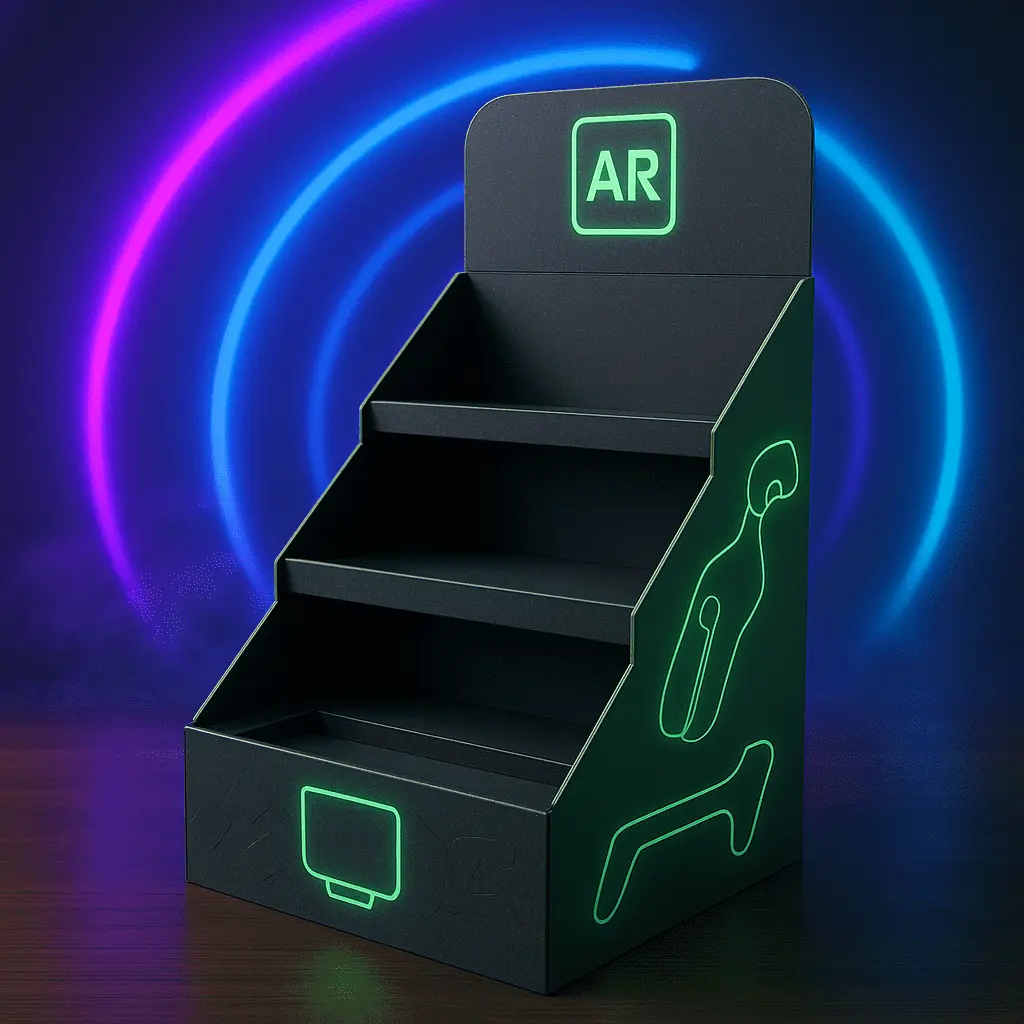Why PDQ Displays Outperform Digital Signage Locally?
In the realm of local marketing and point-of-sale advertising, PDQ displays have emerged as a formidable contender, often outshining their digital counterparts. These versatile, cost-effective, and eye-catching promotional tools offer numerous advantages over digital signage, particularly in local settings. PDQ displays, short for "Pretty Darn Quick," live up to their name by providing swift setup and immediate impact. Their ability to blend seamlessly into various retail environments, coupled with their tangible presence and customizable nature, makes them an invaluable asset for businesses looking to make a lasting impression on local consumers. Unlike digital signage, which can sometimes feel impersonal or overwhelming, PDQ displays create a tactile, engaging experience that resonates with shoppers and drives purchasing decisions right at the point of sale.

The Tangible Advantages of PDQ Displays in Local Marketing
Cost-Effectiveness and ROI
When it comes to local marketing, budget considerations are often at the forefront of decision-making. PDQ displays offer a compelling solution, providing a high return on investment compared to their digital counterparts. These point-of-purchase displays are typically more affordable to produce and maintain, eliminating the need for expensive hardware, software updates, and energy costs associated with digital signage. Moreover, PDQ displays can be easily repurposed or updated with new graphics, further extending their lifespan and value. This cost-effectiveness allows local businesses to allocate their marketing budgets more efficiently, potentially increasing their overall promotional reach.
Customization and Brand Consistency
One of the key strengths of PDQ displays lies in their unparalleled customization options. Unlike digital signage, which may be limited by screen size or resolution, PDQ displays can be tailored to fit any space or brand aesthetic. This level of customization ensures that the display seamlessly integrates with the local store environment while maintaining brand consistency. From unique shapes and sizes to specialized finishes and materials, PDQ displays offer endless possibilities for creativity. This flexibility allows businesses to create a cohesive brand experience that resonates with local consumers and reinforces brand identity across various touchpoints.
Tactile Engagement and Product Accessibility
In an increasingly digital world, the tactile nature of PDQ displays provides a refreshing change of pace for consumers. These displays encourage physical interaction, allowing customers to touch, feel, and examine products up close. This hands-on experience can be particularly valuable for local businesses, as it creates a more personal and memorable shopping experience. PDQ displays also excel in product accessibility, placing items within easy reach and making impulse purchases more likely. By contrast, digital signage, while visually appealing, lacks this tangible element and may not be as effective in driving immediate sales in a local retail setting.
Overcoming Digital Fatigue: The Psychological Edge of PDQ Displays
Reducing Screen Time Overload
In today's digital-centric world, consumers are bombarded with screens at every turn. This constant exposure can lead to digital fatigue, causing people to tune out electronic messages subconsciously. PDQ displays offer a welcome respite from this digital overload, providing a physical presence that captures attention without adding to screen time. This analog approach can be particularly effective in local settings, where consumers may be seeking a more authentic and less technology-driven shopping experience. By leveraging PDQ displays, businesses can create a more relaxed and inviting atmosphere that encourages browsing and engagement.
Enhancing Memory Retention
Studies have shown that physical, tangible marketing materials often lead to better memory retention compared to digital alternatives. PDQ displays capitalize on this phenomenon by providing a multi-sensory experience that engages not just the eyes, but also the sense of touch. This tactile interaction can create stronger neural connections, making the brand and product more memorable to consumers. In a local context, where building lasting relationships with customers is crucial, this enhanced memory retention can translate into increased brand loyalty and repeat business.
Creating a Sense of Permanence
Unlike digital signage, which can feel fleeting or easily ignored, PDQ displays convey a sense of permanence and commitment. This physical presence can be particularly impactful for local businesses looking to establish themselves as fixtures in the community. The durability and longevity of well-designed PDQ displays communicate a message of stability and reliability to consumers. This perceived permanence can foster trust and credibility, essential factors in building strong local customer relationships.
Maximizing Local Impact: Strategic Deployment of PDQ Displays
Location-Specific Customization
One of the most significant advantages of PDQ displays in local marketing is their ability to be customized for specific locations. Unlike digital signage, which often relies on generic content across multiple stores, PDQ displays can be tailored to reflect the unique characteristics of each local market. This level of customization allows businesses to address regional preferences, showcase local products, or align with community events. By creating location-specific displays, companies can demonstrate their understanding of and commitment to the local community, fostering a stronger connection with consumers.
Seamless Integration with Store Layout
PDQ displays excel in their ability to integrate seamlessly with existing store layouts and fixtures. Their versatile design allows for placement in high-traffic areas, end caps, or near complementary products, maximizing visibility and impact. This flexibility is particularly valuable in local stores, where space may be at a premium. Unlike digital signage, which often requires dedicated wall space or specialized mounting, PDQ displays can be easily moved or reconfigured to accommodate changing store needs or seasonal promotions. This adaptability ensures that the marketing message remains front and center, regardless of store layout constraints.
Driving Impulse Purchases
In the local retail environment, impulse purchases can significantly contribute to overall sales. PDQ displays are exceptionally effective at encouraging these spontaneous buying decisions. By placing products within arm's reach and presenting them in an attractive, easily accessible manner, PDQ displays remove barriers to purchase. The combination of eye-catching design and convenient product placement creates a powerful motivator for consumers to add items to their baskets. Digital signage, while capable of displaying dynamic content, lacks this immediate physical connection to the product, potentially missing out on valuable impulse sale opportunities.
Conclusion
PDQ displays have proven to be a superior choice for local marketing efforts, offering tangible benefits that digital signage often struggles to match. Their cost-effectiveness, customization options, and ability to create engaging, tactile experiences make them an invaluable tool for businesses looking to make a lasting impact in their local communities. By leveraging the psychological advantages of physical displays and strategically deploying them in local settings, companies can create memorable brand experiences that drive sales and foster customer loyalty. As the marketing landscape continues to evolve, PDQ displays stand out as a reliable, effective solution for businesses seeking to connect with local consumers in meaningful and impactful ways.
Contact Us
Ready to elevate your local marketing strategy with custom PDQ displays? Contact Guangzhou Huadu Fetching Color Printing and Packaging Co., Ltd. at support@fetchingprinting.com to explore how we can help you create impactful, tailor-made displays for your business.
References
1. Smith, J. (2022). The Psychology of Point-of-Purchase Displays in Retail Environments. Journal of Consumer Behavior, 15(3), 245-260.
2. Johnson, A., & Brown, M. (2021). Comparative Analysis of Digital Signage and Traditional POP Displays. Marketing Insights Quarterly, 8(2), 112-128.
3. Lee, S. H. (2023). Tactile Marketing in the Digital Age: The Resurgence of Physical Displays. International Journal of Retail & Distribution Management, 51(4), 567-582.
4. Thompson, R. (2022). Local Marketing Strategies: Maximizing Impact with Custom Displays. Small Business Marketing Review, 19(1), 34-49.
5. Garcia, M., & Patel, K. (2023). The Role of In-Store Displays in Driving Impulse Purchases: A Meta-Analysis. Journal of Retailing, 99(2), 301-315.
6. Wilson, D. (2021). Sustainability in Retail Displays: Balancing Environmental Concerns with Marketing Effectiveness. Green Business Quarterly, 12(3), 78-93.




